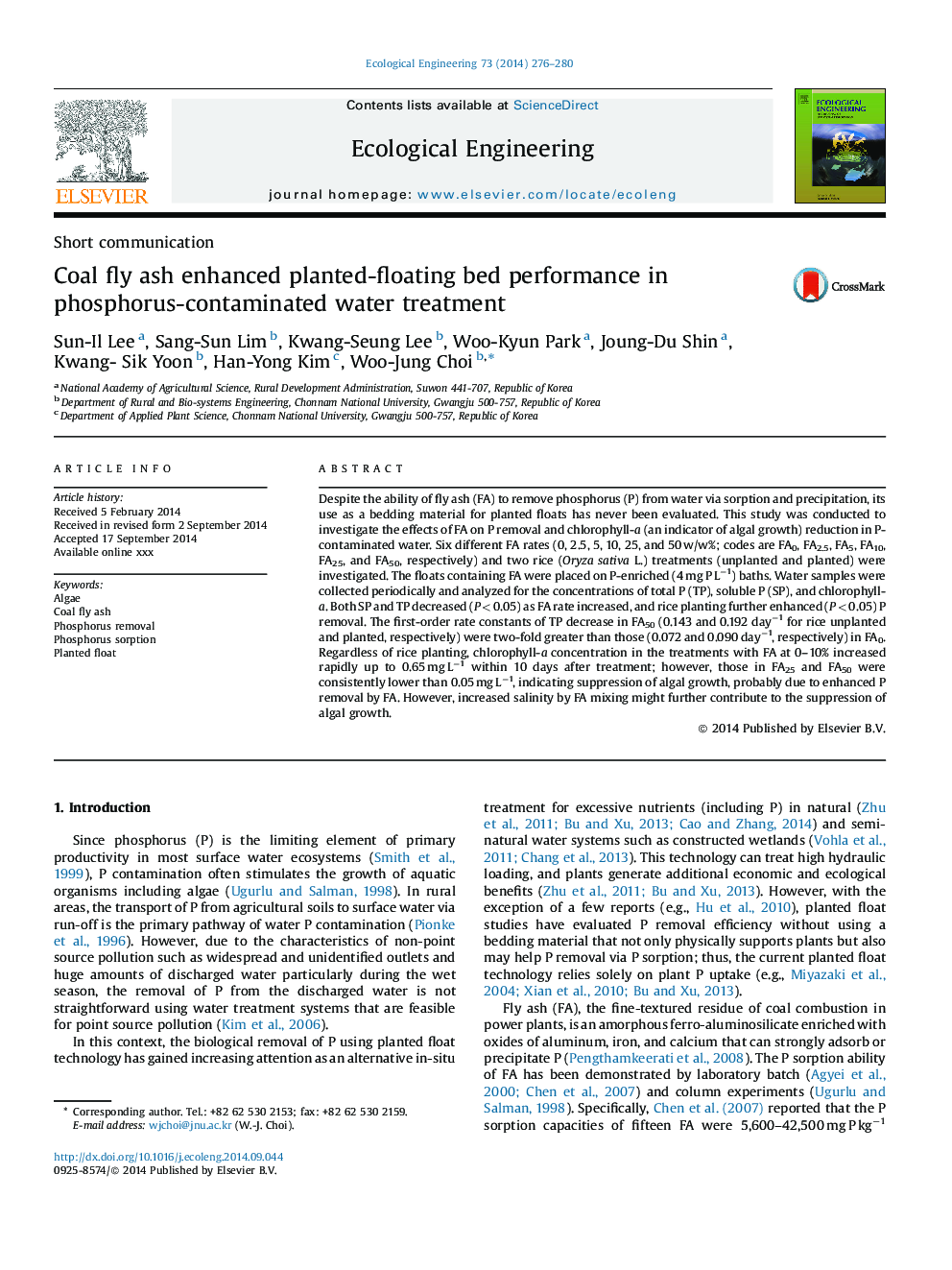| Article ID | Journal | Published Year | Pages | File Type |
|---|---|---|---|---|
| 6301918 | Ecological Engineering | 2014 | 5 Pages |
Abstract
Despite the ability of fly ash (FA) to remove phosphorus (P) from water via sorption and precipitation, its use as a bedding material for planted floats has never been evaluated. This study was conducted to investigate the effects of FA on P removal and chlorophyll-a (an indicator of algal growth) reduction in P-contaminated water. Six different FA rates (0, 2.5, 5, 10, 25, and 50 w/w%; codes are FA0, FA2.5, FA5, FA10, FA25, and FA50, respectively) and two rice (Oryza sativa L.) treatments (unplanted and planted) were investigated. The floats containing FA were placed on P-enriched (4 mg P Lâ1) baths. Water samples were collected periodically and analyzed for the concentrations of total P (TP), soluble P (SP), and chlorophyll-a. Both SP and TP decreased (P < 0.05) as FA rate increased, and rice planting further enhanced (P < 0.05) P removal. The first-order rate constants of TP decrease in FA50 (0.143 and 0.192 dayâ1 for rice unplanted and planted, respectively) were two-fold greater than those (0.072 and 0.090 dayâ1, respectively) in FA0. Regardless of rice planting, chlorophyll-a concentration in the treatments with FA at 0-10% increased rapidly up to 0.65 mg Lâ1 within 10 days after treatment; however, those in FA25 and FA50 were consistently lower than 0.05 mg Lâ1, indicating suppression of algal growth, probably due to enhanced P removal by FA. However, increased salinity by FA mixing might further contribute to the suppression of algal growth.
Related Topics
Life Sciences
Agricultural and Biological Sciences
Ecology, Evolution, Behavior and Systematics
Authors
Sun-Il Lee, Sang-Sun Lim, Kwang-Seung Lee, Woo-Kyun Park, Joung-Du Shin, Kwang- Sik Yoon, Han-Yong Kim, Woo-Jung Choi,
